#yaroslavl region
Text

72 notes
·
View notes
Text
Город Ярославль | The city of Yaroslavl
Волжская набережная | Volzhskaya embankment.


#пейзаж@gorod_v_kadre#фото@gorod_v_kadre#Россия#Russia#Ярославская область#Yaroslavl region#город#city#Ярославль#Yaroslavl#река#river#набережная#embankment#закат#sunset#яхта#yacht#мост#bridge#розовый#pink
2 notes
·
View notes
Text
Terribly Far
This is the premiere of Terribly Far, a new program by Lyudmila Savitskaya.
We will talk about what is happening to people who are terribly far from Moscow and St. Petersburg. Who are terribly far from the congresses, conferences and conflicts of opposition leaders. Who are terribly far even from popular YouTube channels and shows. Who are also terribly far even from Telegram.
Why does this…
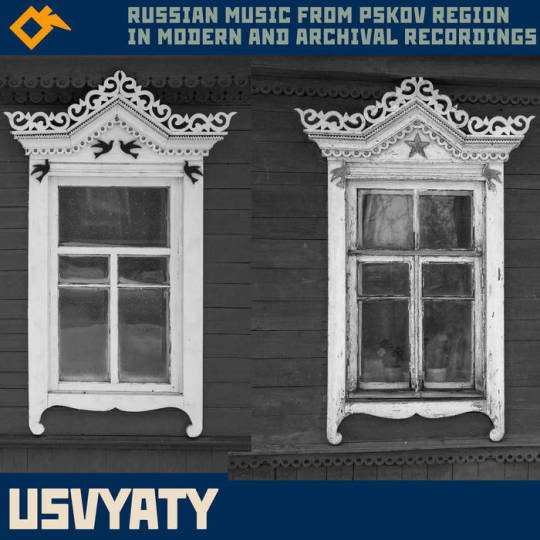
View On WordPress
#"foreign agents"#Antonovka Records#Buryatia#Kaliningrad Region#Lyudmila Savitskaya#Pskov Region#Russian folk music#Usvyaty District (Pskov Region)#YARNOVOSTI (Russian media outlet)#Yaroslavl
0 notes
Text

Stephan Vladislavovich Bakałowicz (Polish, 1857-1947)
Greek, n.d.
Pereslavl-Zalessky State Historical-Architectural and Art Museum-Reserve, Yaroslavl region
#Stephan Vladislavovich Bakałowicz#polish art#polish#greek#art#european art#fine art#classical art#europe#european#fine arts#oil painting#europa#mediterranean#southern europe#cradle of civilization#female#woman
44 notes
·
View notes
Text
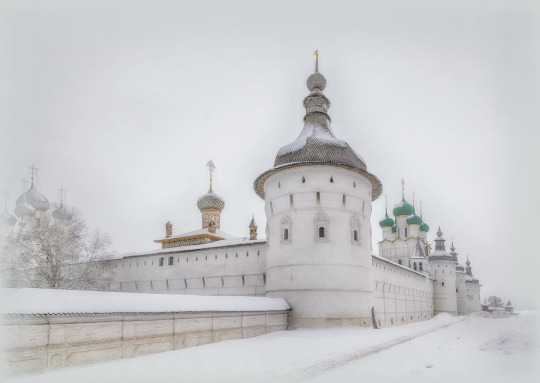
Rostov Kremlin in winter. Rostov Veliky, Yaroslavl region, Russia. From St Elisabeth Convent Minsk
19 notes
·
View notes
Text
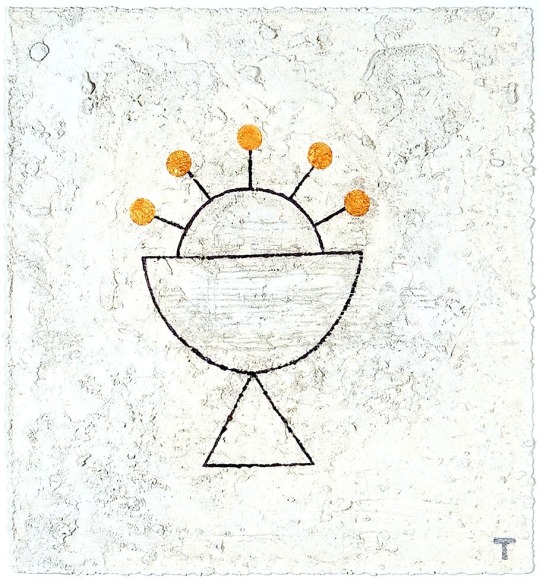
Tolstaya Natalia Olegovna (born. 1954) "The Chash." 2002.
Oil on canvas, author's technique (sand from the Sahara desert), 105×100 cm.
In the lower right corner is the author's initial. On the back is the author's signature, name and date.
Painter. Natalia Tolstoy comes from the genus of Counts Tolstoy. Since childhood, she has been surrounded by an atmosphere of art. Father, Oleg Tolstoy, is a painter, great-grandson of Lev Nikolaevich Tolstoy, and mother, Tatiana Tolstaya, is a graphic artist. From the age of six, Natalia herself was fond of painting. Graduated from the Moscow Higher Art and Industrial School (b. Stroganovskoye), Faculty of Monumental and Decorative Painting, workshop of G.M. Korzheva (1979). Member of the Union of Artists of the USSR (1983). He is a member of the International Art Foundation (1993). Honorary member of the Russian Academy of Arts (2013). The works are in the collections of the State Tretyakov Gallery (Moscow), the Kemerovo Regional Museum of Fine Arts (Kemerovo), the Yaroslavl Art Museum (Yaroslavl), in private collections in Russia, Italy, Finland, Norway, USA, Germany, Switzerland.
Litfund
15 notes
·
View notes
Text

Yakovlev Yak-40 Vologda Aviation Enterprise
Registration: RA-88188
Type: Yak-40
Engines: 3 × Ivchenko AI-25
Serial Number: 48-08
First flight: Mar 1976
Vologda Aviation Enterprise is a regional airline with its head office on the territory of Vologda Airport in Vologda, Russia. It operates scheduled domestic and regional passenger services, maintenance of commercial flights, transportation services for gas and oil pipelines, as well as provides search and rescue operations. Vologda Aviation Enterprise traces its history back to September 1, 1931, when the first aircraft landed on the new air-strip, flying on the route Moscow – Yaroslavl – Vologda – Arkhangelsk. In 1969, the airline received its first Yakovlev Yak-40 aircraft. In 1978 a new Vologda airport was built, it gave impetus to the development of aviation in the region. The current structure of the Vologda fleet includes Yakovlev Yak-40, Antonov An-2 and Mi-8 helicopters.
Poster for Aviators.
aviaposter.com
#yak40#yakovlev#як40#яковлев#sovietaircraft#russianaircraft#ttail#trijet#regionaljet#avgeek#aviationart#giftforpilot
11 notes
·
View notes
Photo


A Rare Embroidered Deisis Depicting Jesus Christ was Found in Medieval Burial Ground
Russian archaeologists have uncovered a rare embroidered Deisis depicting Jesus Christ in a medieval burial ground.
46 graves have been dug up during excavations; one of them contained a woman who was buried with an embroidered Deisis depicting Jesus Christ and John the Baptist and was between the ages of 16 and 25.
The discovery was made during the construction of the Moscow-Kazan highway, where archaeologists found an 8.6-acre medieval settlement and an associated Christian cemetery.
The iconography of Jesus Christ known as Deesis, which can be translated from Greek as “prayer” or “intercession,” is one of the most potent and prevalent images in Orthodox religious art.
The composition of the Deisis unites the three most important figures of Christianity. A tripartite icon of the Eastern Orthodox Church showing Christ usually enthroned between the Virgin Mary and St. John the Baptist.
The fabric is 12.1 cm long by 5.5 cm wide and is composed of two parts joined by a vertical seam made of a woven gold ribbon with a braided pattern. The fabric’s lining did not survive, but a microscopic examination revealed birch bark remnants and needle punctures along the lower and upper edges.
In the center of the fabric is a frontal image of Jesus Christ making a blessing gesture, and to the right of him is John the Baptist praying. A second figure, probably Mary, was once on the left, but it has since disappeared, according to the inspection.
The archaeologists believe the embroidered fabric was once a dark silk samite headdress. Similar examples include the embroidered crosses and faces of saints discovered in the Karoshsky burial ground in the Yaroslavl region, as well as the Ivorovsky necropolis near Staritsa that features an image of Michael the Archangel wielding a spear.
By Oguz Kayra.
#A Rare Embroidered Deisis Depicting Jesus Christ was Found in Medieval Burial Ground#Jesus Christ#John the Baptist#ancient grave#ancient tomb#ancient artifacts#archeology#archeolgst#history#history news#ancient history#ancient culture#ancient civilizations
51 notes
·
View notes
Photo
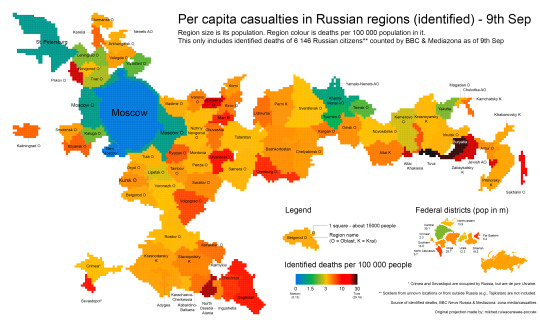
New map of dead soldiers per capita in Russian regions (identified deaths) - updated for September, based on BBC/Mediazona data.
by u/Humanophage
The map is based on identified dead Russian soldiers reported by BBC News Russia and Mediazona, based on finding their obituaries or other announcements about their deaths. There are currently over 6000 identified soldiers. Black and red means higher losses per population in a region, blue and green means lower losses. This is only a fraction of the total losses, but they should be representative because the identification is distributed randomly. I.e., it is unlikely that people from e.g. Moscow are less likely to have an obituary than someone from Altai.
Here is a similar map from May 10th: https://www.reddit.com/r/UkrainianConflict/comments/upg7fw/map_of_dead_soldiers_per_capita_in_russian/ , based on a similar procedure. Since the sample is about 3 times larger now, the scale categories are multiplied by 3 and rounded so the maps are comparable.
The biggest qualitative change happened in Chechnya, which went from the 80th to the 15th place. There is also a new leader, Tuva, which caught up with Buryatia. The casualties in Tuva and Buryatia are significantly higher than elsewhere. Far Eastern ethnically Russian regions used to have low casualties, but are now about average.
Moscow remains by far the lowest contributor at only 17 identified deaths, accounting for 0.3% of deaths despite comprising a little under 9% of Russia's population. St. Petersburg and Moscow Oblast (Moscow region) are also notably low, though not as much. Also low are the resource-rich areas like Tyumen Oblast and some historic Russian cores like Tver and Yaroslavl (but not others like Pskov).
Lowest per capita losses:
Khanty-Mansi AO - 1.12
Yamalo-Nenets AO - 1.09
Moscow Oblast - 0.98
Saint Petersburg - 0.91
Moscow - 0.13
Highest per capita losses:
Tuva Republic - 29.16
Buryatia Republic - 26.05
North-Ossetia - 16.71
Altai Republic - 14.89
Zabaykalsky Krai - 13.8
Federal districts:
Northwestern - 8% of the dead, 9% of total population
Central - 14% of the dead, 26% of total population
Southern - 11% of the dead, 9% of total population
Caucasus - 13% of the dead, 7% of total population
Volga - 23% of the dead, 20% of total population
Ural - 7% of the dead, 10% of total population
Siberian - 12% of the dead, 11% of total population
Far Eastern - 11% of the dead, 5% of total population
Crimea (occupied) - 2% of the dead, 2% of total population
71 notes
·
View notes
Text
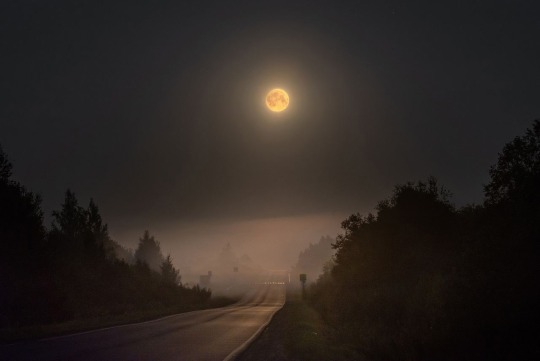
Russia.Yaroslavl region
Россия.Ярославская область
19 notes
·
View notes
Text
Село Большое Село | The village of Bolshoye Selo

#пейзаж@gorod_v_kadre#фото@gorod_v_kadre#Россия#Russia#Ярославская область#Yaroslavl region#село#village#Большое Село#Bolshoye Selo#небо#sky
2 notes
·
View notes
Text
At the start of January 2023, the Ukrainian army began regularly targeting Russian oil and gas refining facilities. Between January 18 and February 3, Ukraine’s Armed Forces carried out seven drone strikes against oil infrastructure, while at least two more drones were shot down in the Nizhny Novgorod region, which contains a refinery. While Ukraine has been attacking petroleum industry targets throughout the war, previous attacks targeted facilities in occupied or border regions. Now, Ukrainian drones have started hitting targets in the Leningrad, Volgograd, and Yaroslavl regions. The independent Russian outlet iStories dug into what these attacks could mean for the next phase of the full-scale war. Meduza has translated the analysis into English.
How vulnerable are oil refiners to drone attacks?
The Novatek chemical terminal in the Leningrad region’s Ust-Luga settlement ceased operations after a drone attack on January 21 — as did the oil refinery in Tuapse on January 25. On January 31, Russia’s Energy Ministry said that the terminal in Ust-Luga was up and running again. A refinery in Volgograd that was hit in an overnight drone attack on February 3 stopped part of its production to repair damage, sources at the plant told Russian newspaper Kommersant. Official reports say the refinery is operating normally.
Oil refineries’ vulnerability to small drones shouldn’t be exaggerated, according to Sergey Vakulenko from the Carnegie Center: “The standards at which Russian oil refineries are built and modernized stems from Cold War-era technical standards. At the time, they were designed to ensure the resilience of plants even during conditions of aerial bombardment by 1000 kilogram (1.1-ton) bombs. That means that drones weighing only a few kilograms can set a refinery on fire, but it can’t destroy it.” Even if a drone hits the most vulnerable part, the gas fractionation unit, it would cause a large explosion which could put a plant out of commission, but it wouldn’t wipe out the whole facility.
However, Russia’s refineries may have difficulties repairing the damaged Western equipment that they started using widely after 2008, Vakulenko notes. It’s now impossible for Russian companies to get all of the parts and expertise they need due to sanctions, and Chinese technology may prove incompatible.
Are air defenses able to defend oil refineries?
There are two ways to defend targets in the deep rear from drones: shielding the border from the enemy and shielding the targets themselves.
It’s difficult for Russia to defend its entire border with Ukraine due to its expanse, explains the Israeli military expert David Sharp. Drones are a difficult target for Russian air defenses. Made out of plastic and composite materials, drones are hard to detect by radar. They also fly relatively low to the ground.
Some of the Ukrainian drones flying into Russian territory are intercepted by air defense systems right in the border regions, especially in the Belgorod region, according to Sharp. “Ideally, air defenses are supposed to catch all drones near the border, but this requires many complexes, many long-range detection systems, including airborne ones, like the A-50 aircraft,” he says. It also requires coordinated effort from all air defense units: “There are many technical and organizational aspects involved; it can’t all be airtight.”
Another option is to put air defense complexes near every facility that could be a target for drone attacks, Sharp explains. This would likely require short- and medium-range systems such as Russia’s Pantsir. It would also likely require more than one complex per facility. After the strikes on the terminal in Ust-Luga and the refinery in Tuapse, Vakulenko wrote that another 18 Russian refineries could come under attack.
“For Russia, defending oil refineries is a significant diversion of resources — even when it succeeds. Many air defense systems need to be deployed either to defend the borders or to defend the facilities, or for both. You either take these systems from the front line, or you increase production, which is very costly,” says Sharp.
Russia doesn’t have enough air defense systems to protect all of its facilities scattered across its vast territory. If attacks continue, according to analysts at the Atlantic Council, Russia’s military command will have to decide where to use air defenses — on the front or in the rear.
Are attacks on oil refineries a new strategy for Ukraine’s Armed Forces?
Yes and no. On the one hand, applying a “long arm,” i.e. hitting targets deep in the enemy’s territory, has increasing been a priority and an important factor in the war’s development, according to Sharp. On the other hand, these efforts have occurred independently of the situation on the front, where reality dictates a defensive strategy.
Military expert Kirill Mikhailov agrees: “These attacks play an important role in both defense and in offense. During the Second World War, the U.S. and the U.K. spent several years looking for ways to inflict as much damage as possible on fascist Germany through bombings.” Strikes on residential buildings and factories didn’t bring about significant results, but closer to 1945, the U.S. “found Germany’s achilles heel.” “They turned out to be synthetic fuel plants. These were huge plants that couldn’t be hidden, and required a lot of time to repair. By the end of the war, the Allies had practically deprived Germany of fuel."
What damage have the drone attacks on Russian oil refineries caused to the economy so far?
This is a difficult question. Here’s what we know.
On January 25-30, Russia saw a nearly four-percent drop in oil processing (compared to January 2023), according to Bloomberg. During the last week of January, the disruptions at the plants in Ust-Luga and Tuapse, which were targeted by drones, may have begun to affect operations at the facilities. In December, around five percent of Russia’s oil processing took place at these plants. There was also a decrease in the amount of output at the oil refinery in Volgograd.
According to Russian newspaper Kommersant, oil refineries processed 1.4 percent less in January than they did in December, and four percent less than in January 2023. While this is partially attributable to annual maintenance and reductions related to Russia’s commitments as part of agreements made with Saudi Arabia to decrease its oil production, it’s also a result of the shutdowns following drone attacks.
On January 31, Russia’s Energy Ministry officially announced measures “to compensate for the declining volumes of automotive gasoline caused by unplanned repairs at the plants.” In order to secure enough gas for the domestic market, the authorities reduced shipments abroad. This caused gas exports to fall by 37 percent and diesel exports by 23 percent compared to January 2023. It’s not clear to what extent these repairs were related to the drone attacks.
Experts say that continued attacks on oil refineries could decrease export volumes (oil products currently account for a third of total oil exports, notes Vakulenko), create a fuel shortage in the country, and even affect the front lines — though it’s difficult to assess under what conditions this would occur and how serious the consequences would be.
Attacks on critical infrastructure, rather than an “endless bloodbath on the front lines,” is what could inflict truly serious damage on Russia, writes British writer and historian Owen Matthews: “Perhaps this is what will make the war too expensive and painful for Putin.”
3 notes
·
View notes
Text
Rybinsk is the second largest city in the Yaroslavl region with a population of 184.600 people.
Before the revolution, it was the largest grain trading center in Russia, a transshipment port of the Mariinsky water system, the city was nicknamed “the capital of barge haulers”.

4 notes
·
View notes
Text
Nanaika-Shatl, dam to Yurash-Shatl. Born 1997, with many diplomas and the following from laikirus.ru:
“Champion of the 60th Udmurt Republican Exhibition, 2005, 84th Yaroslavl Regional Exhibition, 2007, Mari Republican Exhibition, 2007″
Her pedigree has many dogs with a long list of diplomas as well as her own long list of diplomas



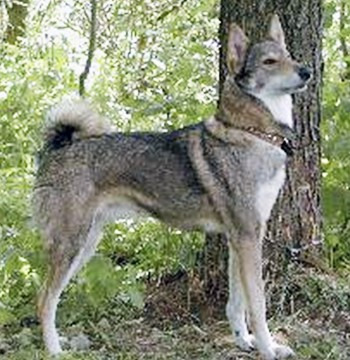


7 notes
·
View notes
Text

The iconostasis of the Holy Trinity Church, The village of Novoye, the Yaroslavl region [Source: OrthoChristian.com]
7 notes
·
View notes
Text

Yuri Dyrin. January cat.Yuri Dyrin "January Cat." Decorated in a frame. Oil on canvas, 2001
Yuri Alexandrovich Dyrin - was born in the village. Kochkurovo, Dubensky district of MASSR, currently lives in Saransk, a member of the Union of Artists of Russia, Honored Artist of the Republic of Mordovia, painter, teacher, bright representative of the ethno-futuristic direction in the art of Mordovia, director of the State Budgetary Educational Institution of Secondary Vocational Education Sychkova." In 1991. Graduated from the Saransk Art School named after F. C. Sychkova, in 2005 he received a diploma of higher education of Moscow State University named after N.P. Ogareva with a degree in Cultural Studies. Since 1992, he has been a participant in republican, regional, all-Russian, foreign, international exhibitions, salons, festivals. Personal exhibitions of Yuri Dyrin were held in Saransk, Sarov, Nizhny Novgorod, Yaroslavl, Sestroretsk, Prague, Moscow, Tallinn, Tartu, Helsinki, Magdeburg, city of Corey, Chistern (Italy), Stavern (Norway), Paris (France). The artist's works are stored in the State Budgetary Institution "Mordovian Republican Museum of Fine Arts named after S.D. Erzi," Museum of the city of Sarov, private collections in Russia, Finland, Norway, Germany, USA, Great Britain. Yuriy Dyrin is the production designer of the cartoon "Kuigorozh" based on the Moksha folk tale. The cartoon was created in the project "Mountain of Gems" at the Moscow studio "Pilot". The cartoon "Kuigorozh" became the winner of the film award "Golden Eagle", received the Audience Award at the Animation Film Festival in Suzdal, and on April 10, 2008 it became the main event of the Republican Animation Film Festival "Mountain of Gems" in Saransk.Yuri Alexandrovich takes an active part in the public life of the Union of Artists He is a member of the board of the regional branch of the Union of Artists of Mordovia, heads the section of the youth branch of the Union of Artists, actively and fruitfully works with young artists of Mordovia.
Mozaika Art
26 notes
·
View notes